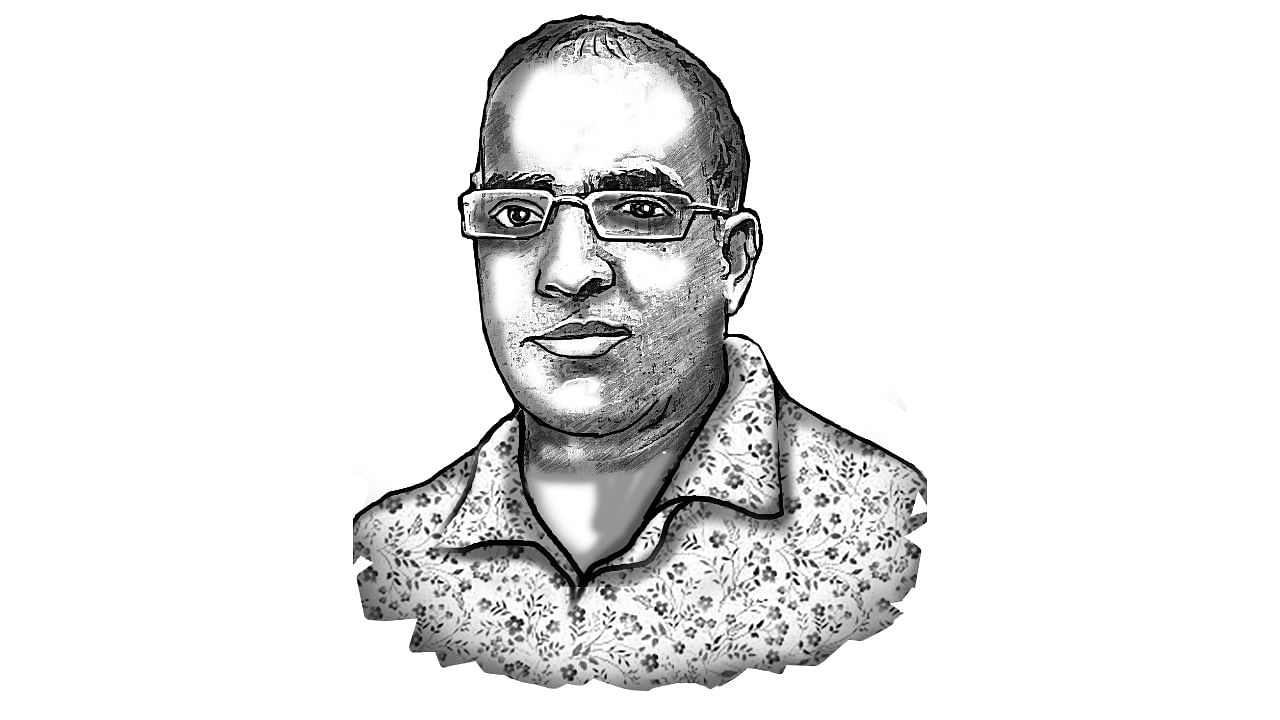
Ashwin Mahesh A social entrepreneur, founder of Mapunity and LVBL, and co-founder, Lithium, wakes up with hope for the city and society, goes to bed with a sigh.
X: @ashwinmahesh
Credit: DH Illustration
Population. That word has been at the forefront of India’s development debates for as long as I can remember. In schools, we were taught early that all Indians are our brothers and sisters, and that we have an enormous number of siblings.
A combination of slowly falling birth rates and rapidly declining death rates has propelled India to the top of the population charts. There are now probably more people in India than in any nation or kingdom or empire at any time in the history of the planet. One in six people on earth is Indian.
We say to ourselves and to others that surely, a country of so many people belongs in the upper echelons of the world order. Our Prime Ministers and opinion-makers have long demanded a seat for India in the United Nations Security Council. The weight of our numbers has also been bolstered in the last thirty years by sustained economic growth. As a result, nowadays many geopolitical blocs seek India’s membership and participation. Big has been useful.
In other ways, however, we have seen population as a burden, and perhaps the biggest obstacle to our development. Population control quickly became national policy; with so many to take care of, even now we tell ourselves that we are rolling boulders steeply uphill. This view is reinforced by the fact that within the country, the states with the highest population growth rates are considerably poorer than the ones that are growing slowly.
It doesn’t seem to strike many people that if we have a lot of people to take care of, we also have a lot of people who can care for them. We should be happy that death rates have fallen as much as they have, and that our people now live a lot longer. Yet, it seems easier to despair that we will struggle because of our numbers than to imagine that we will surely succeed because we have so many people. Even as we count the people, we also discount them.
Now there are signs that the next Census is imminent. Surely, it will help to know more about ourselves; we can plan better and aim for new goals. But the next headcount will also bring back an old challenge: we will be starkly reminded that some states in India are still adding people, while others – especially the southern states – appear to be at their peak populations.
This isn’t new. Soon after Independence, it became clear that some state populations were growing much faster than the national average. The Constitution had enshrined the principle of ‘one person, one vote’, and the census numbers were to be periodically used to redistribute seats in Parliament among the states. That would mean that the states that reduced their population growth rates would lose some of their representative power. They argued that this was tantamount to penalising them for doing something right.
And so in the 1970s, it was decided that the principle of equality in representation would be suspended. Since then, the number of seats in Parliament for each state has remained the same. But the political agreement made 50 years ago was meant to be temporary; it is due to expire in 2026. After that, well, no one really knows yet.
The tempo is rising. N Chandrababu Naidu, now part of the political group that must propose a new arrangement, has previously expressed his concern that Andhra Pradesh should not lose seats in the Lok Sabha after the next Census. Recently, his state government abolished the rule prohibiting those with more than two children from contesting local body elections, claiming that restrictions on family sizes make no sense in a state that is quickly ageing and needs workers in the future to support senior citizens. M K Stalin was right behind, quoting an old Tamil blessing to ‘bear more fruit’, which was widely but incorrectly memed as asking people to have 16 children.
The political posturing over power is a distraction. Instead of focusing on that, we must first abandon our notion that we have ‘too many people’ and embrace the idea that the citizens of our country are its biggest strength, not its weakness. In line with this, we must decentralise governance so that local councils and panchayats have far more powers and funds than they now do, and the states too must get a bigger share of the tax pie. If we fix these, then the path to re-imagining national representation will be better paved.
The coming political tussle is only partly about the count of the people. Instead, it is equally about how ‘we the people of India’ govern ourselves. Over decades, the centralisation of power in New Delhi has eroded the states’ latitude to set their own policies. States have also lost a lot of financial control; this matters greatly in the richer states which contribute much of the funds that are redistributed by the Centre and the National Finance Commission.
These are both long-term trends; the only difference has been that the Congress did this slowly, while the BJP has done it much faster. It is only by reversing this that the table can be set properly for revising each state’s share of seats in Parliament. The right way to uphold the equality of all people in the country is to first decentralise and devolve more power closer to them.